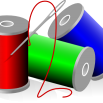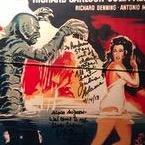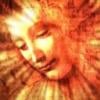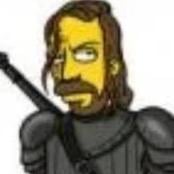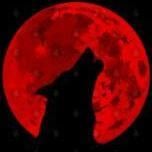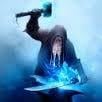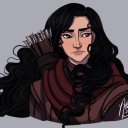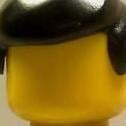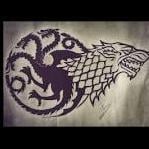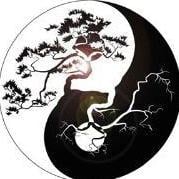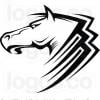-
Posts
2,982 -
Joined
-
Last visited
Recent Profile Visitors
20,468 profile views
Seams's Achievements

Council Member (8/8)
-
 Aejohn the Conqueroo reacted to a post in a topic:
The Quentyn Conundrum
Aejohn the Conqueroo reacted to a post in a topic:
The Quentyn Conundrum
-
Sandy Clegg started following Seams
-
 Sandy Clegg reacted to a post in a topic:
Purple Sigils
Sandy Clegg reacted to a post in a topic:
Purple Sigils
-
 Many-Faced Votary reacted to a post in a topic:
Which theorist/contributor do you miss most from the general forum?
Many-Faced Votary reacted to a post in a topic:
Which theorist/contributor do you miss most from the general forum?
-
This is why I think the underlying symbolism is important: it provides an organizing structure for understanding plot points. For instance, if the purple (and indigo?) sigils represent night, and the yellow sigils represent day, we can sort out lots of day/night and sun/moon references. It would also give us a big hint about why the seasons are out of whack. I think the details of the rainbow color scheme are a structure on which GRRM hangs meaningful details. As long as he can remember the colors of the rainbow, he can keep the details straight for the minor characters. Or, at least, he can rely on Elio and Linda to maintain a wiki so he can double-check the color of a sigil before mentioning a minor son or distant banner when he needs that color to re-enter the story. I picture GRRM's writing house having charts and spreadsheets and print-outs and images and papers all over the walls showing relationships, lists of injuries and deaths and maimings, feasts, clothing, breeds and colors of horses, rivers, gates of King's Landing, bannermen, maps. I'd pay a dollar to get a peek inside that house.
-
I like the way you have organized these Houses/sigils by kingdom but also examined the similarities to sigils in neighboring areas. The significance of the Gates of the Moon might be that it is a bookend: the entrance to the Eyrie, as opposed to the Moon Door, which is the rough exit from the Eyrie. We know that GRRM uses Isis (moon) and Osiris (sun) allusions -- including in the story of Sweetrobin who, like Bran Stark, is a symbolic Horus (son of Isis and Osiris) figure. In the ancient Egyptian story, the sun disappears each night because it sinks into the water like a crocodile but is reborn in the morning. The cadet House Royce emerges after Lysa (Isis/moon) flies out the Moon Door. The symbolism could be that the moon behind the portcullis represents the imprisonment of the moon - consistent with Edmure Tully being taken prisoner within Riverrun BUT his black fish uncle Brynden escaping by swimming under the slightly-open portcullis. The bloody moon of the Wynch (Iron Islands) sigil could represent the "revenge of the moon," perhaps alluding to Catelyn's rebirth as the vengeful Lady Stoneheart. Crescent or curved blades are associated with scythes and arakhs. Jaime Lannister's hand is cut off by a Dothraki arakh. Since Jaime is the golden boy who seems to symbolize the sun, maybe this represents the battle of the sun and moon. Jaime was a prisoner at Riverrun (and Tyrion a prisoner at the Eyrie) before Edmure was imprisoned at Riverrun. I don't know whether I'm truly helping with the purple analysis, except that I mentioned before that Renly's purple guard is imprisoned at Highgarden. While purple is certainly associated with Targaryens and Valyrians, maybe we are supposed to include the many pre-conquest kings in our examination of the royal vibe associated with purple. The two moon sigils on purple, along with House Mallery's mullets, could also mean that purple is associated with night time, when the moon and stars would be present. This may be too much for this thread, but I wonder whether there is a yellow/orange equivalent for each of the purple sigils on your list. If so, we may be looking at day-night counterparts. The Belmore (Vale) and Mallery resemblance are intriguing. I had never heard the word "mullet" as describing a star, so I looked it up. In heraldry, this word is specifically used to indicate the arms of a third son. So maybe House Mallery is descended from a younger son in the line of House Belmore? (Note: House Peckledon on your list has ten mullets.) It makes me laugh when I think that GRRM is slipping in multiple meanings in a funny way, but a mullet is also a type of small fish and a name for a sort of funny-looking haircut. Fat Walda (Frey) says that Edmure's manhood is a small fish: House Mallister has an indigo (near purple) sigil, so it's probably significant that he proposes the toast. Of course, at the same wedding feast, Catelyn says, "Don't cut my hair." Maybe she is fending off the possible mullet that she anticipates is coming. The Mallery name also has a relationship to the word for a millstone. Since Roose Bolton tells us that Ramsay was an illegitimate son through a miller's wife, and Theon kills two sons of a miller's wife, claiming that they are Bran and Rickon Stark, this could come back to the possible Catelyn/Lysa and "rumored sperm donor" motifs. House Belmore (Vale), with six bells on purple, could be part of the larger bell motif: Battle of the Bells and (possibly) Robert's ReBELLion, as well as Robert's love-child, Bella, who is prostitute at the Peach in the Stoney Sept. Dothraki bells symbolize prowess in war. Bells ring at the Sept of Baelor when a king dies and a new one is crowned, but also when Cersei makes her walk of shame. So there's an association with war but also with turnover in rulers. I wonder whether House Mallery, if it represents a cadet branch of House Belmore, carries similar symbolic meaning. A possible association for House Terrick: If you believe that GRRM sometimes uses rhyming words to indicate paired symbols (I believe he does) then House Terrick could be linked to Beric Dondarrion (betrothed to a Dayne). Hawks could be trained hunting birds but could be seen as "cousins" of the Mallister eagle. As you point out, House Terrick is in the "color family" with purple and gold sigils from Houses Payne, Peckledon and Plum. Bear with me. GRRM uses some famous poems to add layers of meaning to the stories, including "Tyger" and "Poison Tree" from William Blake. There is a passage in Tyger that goes something like, "And when the stars threw down their spears, and watered heaven with their tears, did he smile, his work to see? Did he who made the lamb make thee?" Stars throwing down spears might be an explanation for lightning OR shooting stars. The Dondarrion sigil is a lightning bolt (and Dayne is a falling star). The Peckledon sigil is stars. The Terrick sigil is hawk heads, possibly linking to the birds of prey motif (think of Crowfood Umber and all of the crows pecking at corpses in cages). Jon Snow feeds meat to ravens when he visits Maester Aemon. Olenna Tyrell's husband was killed in a falconry accident. I wonder whether all of these purple/gold sigils are part of a Game of Thrones (cyvasse) strategy involving deposing a king or lord through the use of lightning/birds of prey? But the sword Dawn of House Dayne is supposedly made from a fallen star or meteor. So the point may be that there is a cycle of moons and stars set in contrast to the cycle of sunrise. The spear of Sunspear and House Martell may be necessary to sort out this line of thinking. Once the lightning bolt or meteor hits the ground, maybe it becomes a spear that can be retrieved (when it's not the sword Dawn). Or maybe the Martell sunspear is the opposite of the Dayne lightning bolt - a ray of the sun come to earth. This might finally explain why Queen Rhaeynys (sister-wife of Aegon the Conqueror) disappeared - possibly crashed and died - with her dragon, Meraxes, in Dorne. Part of the cycle of sun/moon set and rise. As for House Dalt (Dorne), with lemons strewn on a field of purple, I have speculated elsewhere that there is a mouth association with lemons because of the Westerosi practice of using lemons to clean one's teeth but also because of the Emmon characters who chew sour leaf. Renly's yellow guard was named Emmon Cuy. Of course, we also have Dany longing for a lemon tree by a red door and Sansa and Sweetrobin lusting for lemon cakes. Jeor Mormont likes lemon in his beer, but not in his mulled wine, and he says that dragonglass (obsidian) could be called lemon pie. I'm thinking that maybe red and yellow represent a pair of doors/mouths, which would make sense as Royce and Cuy were guarding Renly's green tent when the shadow assassin snuck in and killed him. So sour leaf and lemon are the red and yellow associated with mouths. Having House Dalt near Sunspear could show that Dorne controls the sunrise, which will take place when the sun emerges from a dragon's (crocodile's) mouth in the form of fire - maybe? Stream of consciousness writing and thinking. Thanks for raising a provocative discussion.
-
 Hippocras reacted to a post in a topic:
Purple Sigils
Hippocras reacted to a post in a topic:
Purple Sigils
-
I'm pretty sure that the key to understanding purple starts with the key to understanding much of GRRM's color symbolism: Renly's purple guard was Ser Parmen Crane. He ends up held prisoner at Highgarden, after being captured by Ser Loras. We know that Loras killed red (Royce) and yellow (Cuy), for failing to protect Renly from the shadow assassin. Renly never had an indigo guard, which has always struck me as significant. Brienne (blue) and Ser Loras (commander) are the only survivors of Renly's guard aside from Crane. Why is GRRM saving Ser Purple for later in the story, I wonder? If you search on the word "crane," it is often associated with a dragon craning its neck. So there may be a Targ association in that sense. But the bird known as a crane also appears in the sigil of House Crane, and is associated with Rose of Red Lake, a daughter of Garth Greenhand (more of GRRM's color symbolism comes from the Garth legends). Red Lake used to be Blue Lake, so there is another purple clue for us. The House Plumm symbolism also seems important in analyzing purple. Ser Parmen Crane wears purple plums on his surcoat. We know that the important Targaryen princess, Elaena Targaryen, had a child from her Plumm marriage, although that child might have been fathered by Aegon IV. Similarly, Ser Bonifer Hasty might be the father of Rhaegar Targaryen. Another house with a purple sigil. These seem like significant clues for us in understanding the possible "royal" connection of purple. GRRM constantly creates doubt about paternity and even suggests that swapped babies could lead to questions about maternity. I think he may be using purple as a sort of "mystery sperm donor" hint. Maybe this connects to the old legend of storks (cranes) delivering babies and to the fertility story in the Garth Greenhands legend. Joyeuse Erenford, the unlucky eighth wife of the fecund Lord Walder Frey, brings a heron sigil into the Frey family tree. This would tie in with the plum / lump wordplay I have tried to decipher: "Lump" was the name that Varamyr Sixskins was given when he was still in utero. Varamyr turns out to be a talented skin changer, perhaps another grey area like the unclear paternity for certain complex characters. [A topic for another thread, but it's possible that Varamyr is a symbolic Jon Snow with his three wolves, bear, shadowcat and eagle companion animals. Jon Snow as Lord Commander brings his Stark heritage but also served under Mormont (bear) and Mallister (dead eagle - I think the Shadow Tower is the Valhalla equivalent for the Night's Watch, and Denys Mallister is a dead guy). Shadowcats are associated with Marillion, Tyrion, Mort - the guard at the Eyrie - and with cracking the bones of dead wildlings to prevent them from becoming wights.] I agree with Landis, above, that the Purple Harbor could also help us to understand the deeper meaning of purple in GRRM's motifs. Arya is in her Cat of the Canals guise when she makes her first entrance into the Purple Harbor district and she later returns as the ugly girl. There is important symbolism in her interactions with Tagganaro, Little Narbo and Casso, a performing seal known as King of Seals. The performers are secretly cutpurses, which may have a "usurper" wordplay connection. If you examine the passages featuring these players, there is wounded hand symbolism that links to the major "Hand of the King" and Kingslayer severed hand and other hand-related stories. The seal may link to the Sealord. Arya undertakes her first Faceless Man assignment in the Purple Harbor and she uses a cutpurse ruse that substitutes a poison-coated gold coin for a different gold coin. Do these gold coins bring us back to the gold coins on the Payne sigil? Or the gold coin found under the chamber pot after the death of Tywin Lannister? Or the gold coins that Brienne throws into the grave of Nimble Dick? If the gold coins on the Payne sigil double as checkers on a checkerboard, the symbolism could mean "king me." Anyway. I'm always glad to sort out another layer of meaning for colors. I am anxious to see how or when Ser Parmen will be released from the Tyrell dungeon.
-
 Seams reacted to a post in a topic:
Etymology and language findings
Seams reacted to a post in a topic:
Etymology and language findings
-
 Seams reacted to a post in a topic:
Etymology and language findings
Seams reacted to a post in a topic:
Etymology and language findings
-
 Evolett reacted to a post in a topic:
Etymology and language findings
Evolett reacted to a post in a topic:
Etymology and language findings
-
Great minds think alike!
-
Fascinating insights on the Hunter sigil. I would bet that GRRM wants us to examine all of the hunting symbolism in this context. Ramsay Snow hunts women. I bet he is killing each Spring, leading to the endless winters that throw the seasons out of balance. Probably the Maidenpool legend is the antidote to Ramsay's Maiden Slaughter, with a champion who judiciously uses a sword provided by the archetypal maiden. Or maybe the maiden herself slays the season: Brienne picks up a would-be suitor, Ser Hyle Hunt, on her journey through the Riverlands. She meets up with him at Maidenpool, iirc, where he has been sworn to the service of Randall Tarly (whose sigil is a huntsman). He is released from that service and becomes part of Brienne's quest to find the high-born maid of three and ten. (Is that another clock reference?) Although Ser Hyle has been shadowing her, though, he doesn't appear until Dick Crabb has been slain. Maybe Ser Hyle represents the new season in Brienne's arc and Nimble Dick is the old season that needed to be laid to rest at his ancestral home. (New thought: In The Odyssey, dawn is always referred to as "rosy-fingered dawn." The rosy fingers might explain why crab claws are persistent imagery in ASOIAF. Maybe GRRM uses crab claws as a symbol for sunrise, similar to Homer's rosy fingers. Interesting that Nimble Dick is going home [Homer wordplay?] and that he is incapacitated by a morning star before he is killed by the fool Shagwell.) Ser Hyle's sigil is a dead deer - I always assumed this was symbolic of Renly, and that Ser Hyle might be a "Renly's Ghost" figure, guiding Brienne. But maybe it's less specifically focused on Renly and more of a reference to the death of the archetypal horned lord and the need for a rebirth. It may be wishful thinking, but I also note that the five fanned arrows in the House Hunter sigil leave out the 9 o'clock and 3 o'clock arrows. The horizontal brown bar across the House Hunt sigil might provide the completion of the clock face. Meanwhile, the highborn maid of three-and-ten is serving wine to the always-thirsty Young Lord Hunter, who has apple cheeks. (This service by the maiden fits with the observation that the young lord might represent the new season who has slain the old Horned Lord.) I believe one of the first apple associations is King Robert telling Ned to hold a feast and serve up the boar that killed him with an apple in its mouth. This forum has made note that boars are usually present at the death of kings, but also the presence of Fossoways of various kinds when a new king or dynasty is in the making - most notably in The Hedge Knight, but also with the introduction of the "brown apple Fossoways" in the Young Griff arc. We also see characters such as Jon Snow and Ser Davos and Littlefinger eating apples, and Jon Snow stepping on rotten apples at the ruined inn near Queenscrown. If the apple cheeks of Lord Hunt are part of the symbolism, this would add some insight to the shooting of apples in the preface of AFfC: this activity would also be part of the "changing the seasons" symbolism. The hapless Pate wants nothing more than to spend his life with Rosy - the expensive virgin up for sale in the nearby brothel (and likely a part of the Rosy-Fingered-Dawn symbolism). Instead, this keeper of the ravens is apparently killed. We don't know what will happen to Rosy. We have all been focused on the symbolism of the three swords because of the Azor Ahai story. I bet we need to find four swords because of the four seasons. Septon Chayle tells Bran that the comet is the sword that slays the season. And then Septon Chayle is apparently slain but he reappears at The Wall - apparently now part of The Watch. (I know people think GRRM made a mistake putting Chayle at the Wall, but I don't think GRRM makes mistakes like that.) Tobho Mott has turned Ice into two swords. I bet the sword made by Gendry is the third. I wonder which is the fourth sword needed to rebalance the seasons? I wouldn't be surprised if it is Heartsbane, the Tarly family sword. Or maybe Longclaw, bringing us back to Crackclaw and the rosy fingers.
-
GRRM may hold us in suspense for awhile before revealing whether Pod survived or what condition he is in. I think there is a pattern of "the boy who lived." We see it in Ser Dontos (spared at the request of Ser Barristan after the Defiance of Duskendale), The Last Lord Tarbek, who may have drowned or might have survived after the Rains of Castamere, Bran (and Rickon) after the tarring of the miller's boys, possibly Patchface, some historical Targs, maybe Aegon / Young Griff and/or Jon Snow. I think Pod may be one of these survivors already: he was spared after the ham theft in Tywin's wagon train.
-
 Sandy Clegg reacted to a post in a topic:
Pod and Egg
Sandy Clegg reacted to a post in a topic:
Pod and Egg
-
 Wizz-The-Smith reacted to a post in a topic:
Pod and Egg
Wizz-The-Smith reacted to a post in a topic:
Pod and Egg
-
Agreed. It's been years since I've taken a look at coins as a central topic. Some links to old ideas, in case anyone wants to research old posts before coming up with a fresh spin on coins. (The thread about jailers is directly relevant to understanding the House Payne "hidden king" possibility. And overflowing chamber pots in jail cells is also relevant to your doo doo discussion.)
-
 Seams reacted to a post in a topic:
Pod and Egg
Seams reacted to a post in a topic:
Pod and Egg
-
 Hippocras reacted to a post in a topic:
Pod and Egg
Hippocras reacted to a post in a topic:
Pod and Egg
-
The Payne sigil also alludes to the "game" of thrones motif because it looks like a royal checkerboard. I do think the gold coins in the sigil represent kings: there is a link between coins and icons but also coins and dragon scales (Pennytree is a tree/dragon/king hybrid). The nail through each penny at Pennytree may represent the slaying of many kings. But this then ties into the Master of Coin motif involving Littlefinger and Tyrion, Penny and Groat, etc. I do believe that the Payne / Dayne connection is significant, along with House Reyne, the step-mother / in-laws that Tywin Lannister tried to destroy. Not to beat a nearly-dead horse (or piebald rounsey) but I also think there is a pain / pane / Payne pun that ties Pod into window panes, physical pain and the French word for bread. That could mean that Hot Pie, the baker, is also part of this group of characters. Window panes in the book are sometimes described as diamond-shaped. Dragon teeth are compared to diamonds. If accurate, this wordplay / symbolism chain would tie House Payne into dragons. Pod has a sty on his eye. "Sty" is another name for a pen or shelter for pigs. The Imp turned away from her. "The first time I wed, there was us and a drunken septon, and some pigs to bear witness. We ate one of our witnesses at our wedding feast. Tysha fed me crackling and I licked the grease off her fingers, and we were laughing when we fell into bed." (ASoS, Sansa III) Also: Far from home, alone, and penniless, the boy had attached himself to a fat hedge knight named Ser Lorimer the Belly, who was part of Lord Lefford's contingent, charged with protecting the baggage train. "The boys who guard the foodstuffs always eat the best," Ser Lorimer liked to say, until he was discovered with a salted ham he'd stolen from Lord Tywin's personal stores. Tywin Lannister chose to hang him as a lesson to other looters. Podrick had shared the ham and might have shared the rope as well, but his name had saved him. Ser Kevan Lannister took charge of him, and sometime later sent the boy to squire for his nephew Tyrion. (AFfC, Brienne III) I don't know whether Tyrion will name him heir, but I think the author wants us to connect Pod to Tyrion's Tysha bond, whether he intends Pod as a literal descendant of Tyrion or not.
-
 Seams reacted to a post in a topic:
Pod and Egg
Seams reacted to a post in a topic:
Pod and Egg
-
 Seams reacted to a post in a topic:
Pod and Egg
Seams reacted to a post in a topic:
Pod and Egg
-
"Howl" and Read seems more likely. Arya uses a howl as a signal. There is also wordplay around wohl (German for "well") / whole / howl, I believe. As well as "hole."
-
 SaffronLady reacted to a post in a topic:
Puns and Wordplay
SaffronLady reacted to a post in a topic:
Puns and Wordplay
-
 SaffronLady reacted to a post in a topic:
Just Who Killed "Breakspear"? (Spoilers if You Have Not Read the Hedge Knight Obviously)
SaffronLady reacted to a post in a topic:
Just Who Killed "Breakspear"? (Spoilers if You Have Not Read the Hedge Knight Obviously)
-
A Trial of Seven is a major shake-up and transformative event in The Game of Thrones. I believe Baelor knew this going in to the staged combat; he likely knew he was fated to "die" that day (although death is often a momentary condition in ASOIAF). For a little perspective on the importance of a Trial of Seven, use anagrams to compare it to these transformative events in the series: Reveal at Fist (Jon Snow finds the obsidian cache) Aversion Left (Dany is told she must always take the door to the right.) Oft a Sniveler (Sansa / Alayne has to appease Sweetrobin and bring him down the mountain.) The important focus at Ashford Meadow is not necessarily on the fatal blow for Baelor - although I do think it came from Maekar. I think the author wants us to look at the seven warriors on one side vs. the seven on the other side. He is showing us a major shift in the line of succession in the Targaryen/Blackfyre dynasty and the shift is to Dunk and Egg as a new team that will eventually succeed to the throne. I agree that this is being choreographed by Bloodraven, but Baelor is in on it. The outcome of the trial helps to move Egg into place as Maekar's eventual heir and I believe that Baelor's spirit goes into Dunk. You can see it in the illustration, in case it's not clear in the text. It's part of the pattern of balancing opposites that has been a hallmark of the Targaryen dynasty for centuries - Aegon had two wives. There was a civil war and offspring from the two sides eventually marry. Some Targaryens try to break the cycle, but the balancing act keeps reasserting itself in different ways. We do see a fair amount of brothers-killing-brothers violence in ASOIAF and related stories. Arryk and Erryk Cargill come to mind. Lump and Bump, the free folk skinchanger and his brother. There is a lot of suspicion about deaths in the Frey family. Jon Snow is apparently killed by his "Black Brothers." We also see a number of uncles who seem to disappear - Gerion Lannister, for one. I wrote about this in a long-ago thread called the Vanishing Uncles of Westeros. I can't remember the details of the vanishing uncle analysis, but I think the gist of it is that the remaining brother loses the qualities of the missing sibling - Tywin became a humorless jerk after Gerion was lost. (But Gerion gave a dagger as a wedding gift to Robert Baratheon, and we know that giving a blade to someone is a huge big deal in recognizing an heir in Westeros. He also left behind a daughter named Joy, who is seen as a prize by Tywin but an insult by Lady Westerling.) I think we can also examine stories such as Gendel and Gorne, where the brothers went into combat together. One was killed and the other lost forever (but living in the Underworld). If you carefully parse the words used to describe Prince Doran and Prince Oberyn, I think you can tell that Oberyn knows he is going off to his death when he makes the journey to King's Landing. There is the bit about the Dornish water game where the small child sits on the shoulders of the bigger child -- meaning that the small child is the one who eventually falls. Doran also uses a metaphor about being the grass and Oberyn being the snake in the grass. I suspect that the willing sacrifice by Oberyn is similar to Baelor Breakspear going to his death in Dunk's trial. Sometimes GRRM seems to use a cousin, step-brother, good brother, or foster brother as a brother substitute. I can see the logic behind the idea that Robyn Rhysling is Bloodraven. Earlier in the story, I think Bloodraven is Plummer, who is introduced to Dunk as the Master of the Games. Dunk tells Plummer that a robin was the only witness to Ser Arlan knighting him. I think Plummer knows that Dunk is lying, and that would be fitting for a man with 1000 eyes and 1. Well, I can see that this is bringing out the tangents in me. Good topic.
-
 Seams reacted to a post in a topic:
Sphinxes = Stranglers: Part 2 (updated)
Seams reacted to a post in a topic:
Sphinxes = Stranglers: Part 2 (updated)
-
What kind of searches have you tried? I would think something like "Rhaegar Trident camps" or just "Trident camps" or "Rhaegar camps" plugged into the search site would help you zero in on what you seek. https://asearchoficeandfire.com/
-
 Seams reacted to a post in a topic:
Bran is a hero: or, GRRM's color codes
Seams reacted to a post in a topic:
Bran is a hero: or, GRRM's color codes
-
House Glover seems to be part of the glove symbolism. Ethan being spared may be part of the rules of The Game of Thrones that are not explained to readers. Other glove or Glover moments come at turning points: Ser Waymar wearing moleskin gloves when he duels the Other in the Prologue; Jon Snow wearing moleskin gloves over his burned hand when he tries to desert from the Night's Watch; Ser Jorah giving gloves to the Widow of the Waterfront before she assigns him and Tyrion and Penny to a doomed voyage; Roose Bolton plans to have gloves made out of wolf cubs he killed in a hunt. Arya sees Robett Glover among the captives entering Harrenhal (ACoK, Arya IX): Arya receives fingerless gloves from the sailors on the Titan's Daughter. Littlefinger tells Sansa to take off her gloves after he kisses her but she refuses; Lysa is unhappy to see that Sweetrobin is not wearing gloves in the same scene. Theon puts on and takes off gloves numerous times. After he is maimed, he wears gloves until Lady Dustin asks him to take them off, iirc. Gloves seem like an important link between the major motif around hands (Hand of the King, Jaime's gold hand, Cold Hands, the maimed hands ranging from Davos to Qhorin, etc.) and skinchanging - slipping into an animal skin. But why would wearing or sparing or giving gloves occur so regularly in the series? Am I right in linking it to major turning points? Or does it just signal that something is disguised? Glovers have a gauntlet sigil, however, so that may have special meaning aside from skinchanging. "Throwing down a gauntlet" means challenging someone to a fight, often a duel. So Ethan's survival may have been a message from Aerys to signal that he is challenging the North to a fight. In ASOIAF, gauntlets are often referred to as lobstered gauntlets. This ties them into the shellfish motif. So what is the deeper meaning of gloves? And is Ethan's survival part of a larger theme?
-
That also seems like an allusion to this: Interesting that Lady Sybelle is in a godswood but Alyssa was in a place where there is explicitly no godswood. Both women seem to have lost many family members to violence. There is also an element of futility for each - Sybelle's prayers are not heard (or so the unreliable narrator believes?) and Alyssa's tears never reach the Vale. And Catelyn compares herself to Alyssa. Will she be the exception? Saving some of her family members?
-
I'm thinking this probably also applies to The Sworn Sword, in which Dunk makes a big point of describing the too-hot baths that Egg prepares for him in the basement level at Holdfast but then the sleeping arrangement unique to Dunk and Egg on the roof of the tower. Ser Eustace says "Mayhaps" three times in the story. In the other two Dunk & Egg stories, the word appears only once. Maybe it's a necessary ingredient for a king to be in an underground "tomb" or dungeon as well as the top of a tower. Tyrion is the only major character to go into the underground wild fire storage area of the alchemists but he also spends time in the ice cells at the Eyrie as well as the Tower of the Hand. I believe Tyrion, Shae and Arya are the only major characters known to visit the dragon skulls in the lower level of the Red Keep.

